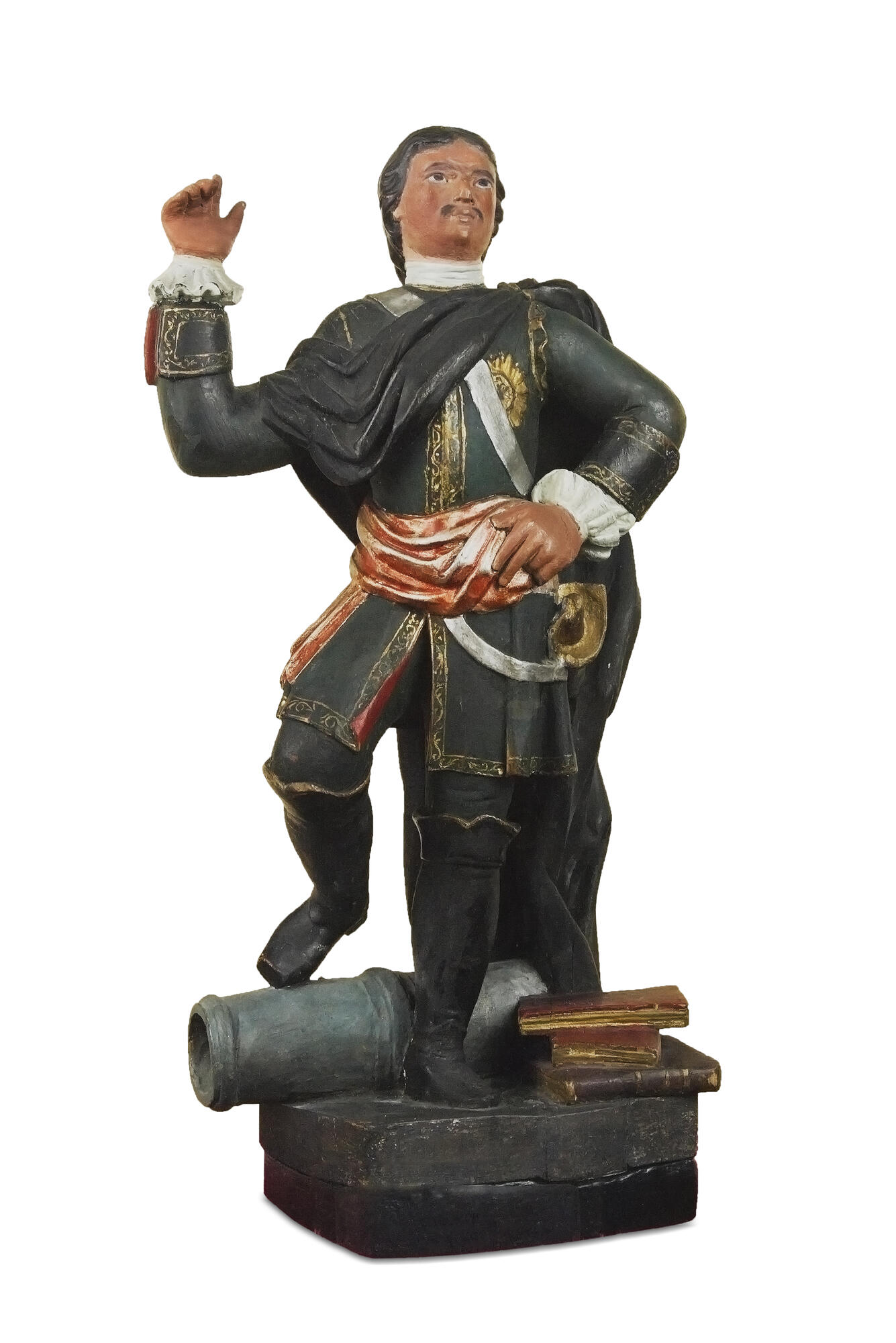A real breakthrough in the development of Russian medicine took place during the reign of Peter I. The collection of the Military Medical Museum contains a rare wooden sculpture of the emperor, which was made by an unknown author in the 18th century.
Peter I was an enlightened ruler; he learned 14 crafts and was especially interested in natural sciences and medicine. During the first months of the Grand Embassy — a major diplomatic mission to Europe in 1697–1698 — Peter met the famous anatomist Frederic Ruysch and paid a visit to his private museum. Russian Tsar was astounded by how Russian medicine differed from European one. The emperor attended Ruysch’s anatomy lessons, however, he could not attend public dissections: Russian Tsar was more interesting to the general public than the cadavers. In 1716, during his second trip to Europe, Peter again met with Ruysch to buy a collection of “monsters” for the Kunstkamera — specimens of those born with developmental anomalies.
It was Peter I who laid the groundwork of national health care system. In 1707, on the order of the emperor, the first Russian hospital was built — the Moscow hospital (today it is the Burdenko Central Military Clinical Hospital). Later, the Admiralteysky and Sukhoputny hospitals were opened in St. Petersburg. Hospital schools for training military medical personnel were founded as well. During his reign, Peter I opened 10 hospitals and more than 500 infirmaries.
In 1701, Peter I issued a decree which stipulated foundation of eight free, or private, pharmacies in Moscow. That’s how he fought against illegal trade of medicine and herbs. Pharmacists were freed from military duty and taxes; they were allowed to use the image of the state emblem on documents. Soon state and private pharmacies were opened in other cities of the country.
In 1714, the emperor decided to expand the scope of activities of the Aptekarsky Prikaz (Pharmacy Department) — a department that dealt with pharmaceutical gardens and the preparation of medicinal herbs, supervised the work of doctors, collected medical books, sold vodka, wine, beer and honey. Peter changed the name of the department to the Office of the Main Pharmacy, and then created a new department on its basis — the Medical Office.
According to the contemporaries, Peter I almost always carried with him two sets of tools: a mathematical set — for making calculations — and a surgical set — for performing surgeries.
Peter I was an enlightened ruler; he learned 14 crafts and was especially interested in natural sciences and medicine. During the first months of the Grand Embassy — a major diplomatic mission to Europe in 1697–1698 — Peter met the famous anatomist Frederic Ruysch and paid a visit to his private museum. Russian Tsar was astounded by how Russian medicine differed from European one. The emperor attended Ruysch’s anatomy lessons, however, he could not attend public dissections: Russian Tsar was more interesting to the general public than the cadavers. In 1716, during his second trip to Europe, Peter again met with Ruysch to buy a collection of “monsters” for the Kunstkamera — specimens of those born with developmental anomalies.
It was Peter I who laid the groundwork of national health care system. In 1707, on the order of the emperor, the first Russian hospital was built — the Moscow hospital (today it is the Burdenko Central Military Clinical Hospital). Later, the Admiralteysky and Sukhoputny hospitals were opened in St. Petersburg. Hospital schools for training military medical personnel were founded as well. During his reign, Peter I opened 10 hospitals and more than 500 infirmaries.
In 1701, Peter I issued a decree which stipulated foundation of eight free, or private, pharmacies in Moscow. That’s how he fought against illegal trade of medicine and herbs. Pharmacists were freed from military duty and taxes; they were allowed to use the image of the state emblem on documents. Soon state and private pharmacies were opened in other cities of the country.
In 1714, the emperor decided to expand the scope of activities of the Aptekarsky Prikaz (Pharmacy Department) — a department that dealt with pharmaceutical gardens and the preparation of medicinal herbs, supervised the work of doctors, collected medical books, sold vodka, wine, beer and honey. Peter changed the name of the department to the Office of the Main Pharmacy, and then created a new department on its basis — the Medical Office.
According to the contemporaries, Peter I almost always carried with him two sets of tools: a mathematical set — for making calculations — and a surgical set — for performing surgeries.


